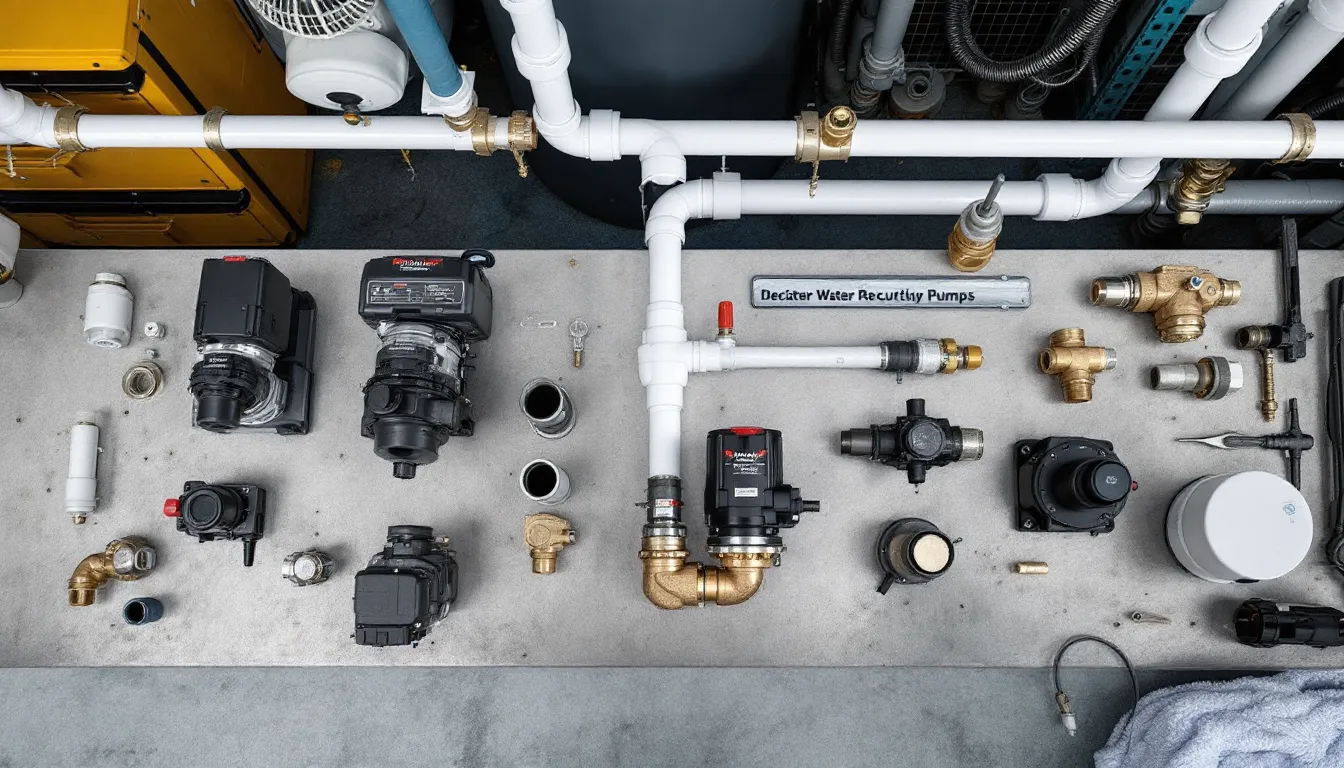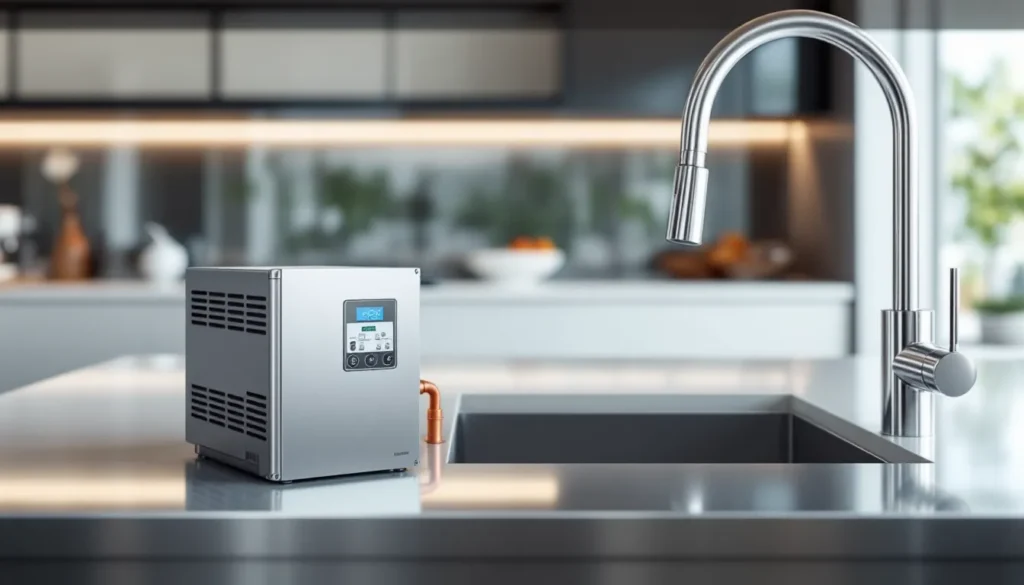Key Takeaways
- Instant Hot Water: Hot water recirculating pumps provide immediate access to hot water, eliminating the frustrating wait time typical in conventional systems.
- Water Conservation: These pumps significantly reduce water waste by minimizing the amount of cold water that goes down the drain while waiting for hot water.
- Energy Efficiency: Many systems come with timers and thermostatic controls to maintain optimal temperature, thus reducing energy consumption and lower utility bills.
- Flexible Installation Options: Hot water recirculating pumps can be installed in various configurations, making them adaptable to different home layouts, including dedicated and retrofit systems.
- Potential Drawbacks: Consider initial installation costs, ongoing energy consumption, and maintenance requirements as part of your decision-making process.
- Increased Home Value: Installing an energy-efficient hot water recirculating pump can enhance your property’s appeal, making it more attractive to potential buyers.
Imagine stepping into your shower only to be greeted by icy water while waiting for the hot stuff to arrive. Frustrating, right? Hot water recirculating pumps are designed to eliminate that wait, providing instant hot water at your fingertips. But how do they actually work?
These clever devices keep hot water circulating through your plumbing system, ensuring it’s always ready when you need it. By understanding the mechanics behind hot water recirculating pumps, you can appreciate the convenience they offer and the energy savings they can provide. Let’s dive into the inner workings of this innovative technology and discover how it transforms your daily routines.
Overview of Hot Water Recirculating Pumps
Hot water recirculating pumps maintain a constant flow of hot water in your plumbing system. These pumps eliminate the wait for hot water by continuously circulating it from the water heater to the fixtures. When you turn on a tap, hot water is immediately available, enhancing comfort and convenience.
The system typically includes two main components: the pump and the return line. The pump moves the hot water through the pipes, while the return line sends unused water back to the heater, ensuring optimal efficiency. Some systems include a timer or thermostat, which controls pump operation based on your schedule, minimizing energy usage.
Benefits of hot water recirculating pumps include reduced water waste and lower energy costs. By cutting down the time you wait for hot water, you use less water overall. Systems with built-in timers utilize energy only when needed, further increasing efficiency.
Installation can occur in various configurations, such as standard, with a dedicated return line, or retrofitted systems that use existing plumbing. Each option offers distinct advantages based on your home’s layout and your hot water needs.
Components of a Hot Water Recirculating Pump

Several key components work together in a hot water recirculating pump system to ensure hot water is available instantly when needed.
Pump Types
Different types of pumps cater to varying needs and preferences.
- Dedicated-line pumps: These systems have a dedicated return line that connects directly to the water heater. They offer high efficiency and optimal performance.
- Retrofit pumps: These systems utilize existing hot water lines for recirculation. Their installation is simpler, making them suitable for homes without a dedicated return line.
- Timer-controlled pumps: These pumps operate based on preset schedules, allowing users to save energy by reducing operation during off-peak hours.
- Thermostatic pumps: Equipped with temperature sensors, these pumps activate only when water temperature drops below a certain threshold, ensuring energy-efficient operation.
Pipe Configuration
Proper pipe configuration affects the efficiency and performance of the recirculating pump system.
- Closed-loop systems: These configurations return unused hot water directly to the heater through a dedicated return line. They minimize temperature loss and maintain consistent water heat.
- Open-loop systems: Here, hot water moves to fixtures and returns through an unused cold water line. While simpler, this setup might not maintain the same temperature effectiveness as a closed-loop system.
- Tee fittings and valves: Using appropriate fittings and shut-off valves helps direct water flow efficiently, ensuring quick delivery of hot water.
- Insulated pipes: Insulation reduces heat loss traveling through the pipes, maintaining water temperature and enhancing efficiency.
These components and configurations determine how effectively the system operates, ultimately providing you quicker access to hot water and reducing water waste.
How Does a Hot Water Recirculating Pump Work?
Hot water recirculating pumps continuously circulate hot water through your plumbing system. This process ensures immediate access to hot water, eliminating waiting time.
The Recirculation Process
The recirculation process involves several key components working together. The hot water recirculating pump draws water from the hot water heater and pushes it through the home’s plumbing system. A return line directs unused hot water back to the heater, maintaining a constant supply of warm water in the pipes. As the pump operates, it creates a closed-loop system that maximizes efficiency by preventing water from cooling down when it’s not in use. This design significantly reduces water waste, as it ensures hot water is readily available at every faucet.
Thermostatic Control
Thermostatic control enhances the functionality of a hot water recirculating pump. This feature uses a thermostat to monitor water temperature within the system. When the water temperature drops below a preset level, the thermostat activates the pump, circulating water until it reaches the desired heat. With this control, the system operates only when necessary, further conserving energy and ensuring that hot water remains consistently available when needed. Some systems allow for customizable temperature settings, allowing you to tailor the operation to your specific preferences.
Benefits of Using a Hot Water Recirculating Pump
Hot water recirculating pumps offer numerous advantages that enhance your plumbing experience.
- Instant Hot Water: You don’t wait for water to heat up. The system circulates hot water, delivering it immediately when you turn on the tap.
- Water Conservation: You save water with reduced waste. By minimizing the wait for hot water, less water goes down the drain.
- Energy Efficiency: You cut energy costs. These pumps maintain hot water circulation with minimal energy requirements, lowering your utility bills.
- Comfort and Convenience: You enjoy a more comfortable home environment. No more chilly waits for hot water in showers or sinks enhances everyday convenience.
- Versatile Installation: You can adapt the system to fit various home layouts. With both dedicated-line and retrofit options, the installation can match almost any plumbing setup.
- Customizable Settings: You tailor the operation to your needs. Many systems offer timers or temperature controls that allow you to set schedules aligned with your routine.
- Increased Home Value: You boost your property’s appeal. Energy-efficient features, like a hot water recirculating pump, can attract potential buyers and enhance your home’s market value.
By understanding these benefits, you appreciate the functionality and efficiency that hot water recirculating pumps bring to your daily life.
Potential Drawbacks and Considerations
Hot water recirculating pumps offer numerous benefits, but they also come with potential drawbacks and considerations.
- Initial Cost: Initial installation costs vary, with systems ranging from $200 to $800, excluding labor. Assessing the long-term savings against upfront expenses is essential for effective budgeting.
- Energy Consumption: While energy-efficient, these pumps consume electricity continuously or when activated. Monitoring energy usage helps determine if savings on water outweigh ongoing electrical costs.
- System Noise: Some systems generate noise during operation. Contemplate noise levels before installation, especially in homes where quiet environments are essential.
- Maintenance Requirements: Regular maintenance is crucial for optimal performance. Maintaining pumps and plumbing systems involves checking for leaks, inspecting components, and ensuring no buildup obstructs flow.
- Water Temperature Regulation: Improper settings may lead to excessively high water temperatures. Familiarizing yourself with system controls ensures safe and comfortable water temperatures.
- Compatibility Issues: Older plumbing infrastructures might require modifications for installation. Investigating compatibility and potential plumbing updates prevents costly surprises.
- Limited Lifespan: Pumps typically last between 10 to 15 years. Planning for eventual replacement helps maintain uninterrupted service.
- Resource Drain: Although designed for efficiency, system efficiency may still lag in situations with low demand. Evaluate the system’s performance based on your household’s hot water needs.
Understanding these drawbacks and considerations ensures you make informed decisions. Addressing these factors enables you to maximize the effectiveness of hot water recirculating pumps while minimizing potential inconveniences.
Conclusion
Investing in a hot water recirculating pump can transform your daily routine by providing instant access to hot water while conserving both water and energy. With various options available to suit your home’s plumbing, you can enjoy enhanced comfort and convenience.
As you weigh the initial costs against long-term benefits, consider how these systems can elevate your living experience. Regular maintenance and proper installation will ensure you maximize efficiency and minimize potential issues.
By understanding the mechanics and advantages of hot water recirculating pumps, you’re equipped to make an informed choice that enhances your plumbing system and overall home value.

Hi, I’m Md Rofiqul, a gardening enthusiast who loves spending time in the garden and backyard. I enjoy caring for plants, growing flowers and vegetables, and creating a green space that feels peaceful and refreshing. Gardening is more than just a hobby, it’s a passion that connects me to nature and brings joy to my daily life. Living with plants inspires me to embrace simplicity, patience, and sustainability while making every day more colorful and rewarding.
